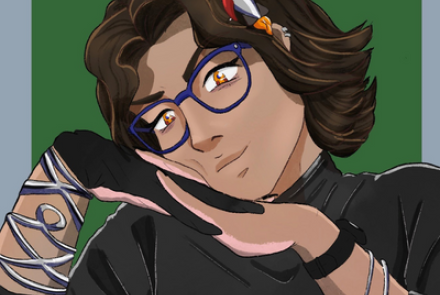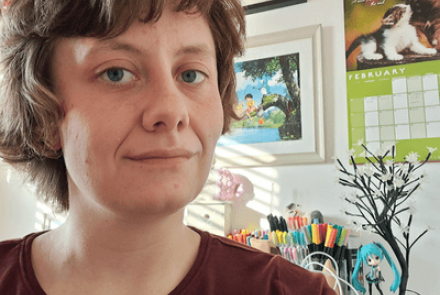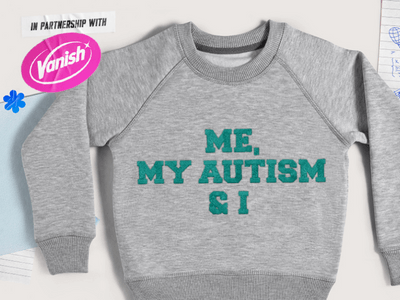Why are autistic teen girls reaching crisis point before being diagnosed in our schools?
There are three times as many boys diagnosed autistic as girls in the UK but the real picture is more complicated than that, driven by lack of knowledge about an internal presentation of autism and social expectations around gendered behaviour.
Currently many teachers have little training on neurodivergency, particularly as it tends to present in girls. Levels of understanding of autism varies widely, even for school SENDCOs (Special Educational Needs and Disabilities Coordinator). While there’s training available through the Autism Education Trust, it’s not mandatory. There’s no framework for teachers to be able to spot autistic traits, and training, along with research, concentrates on an external presentation of autism common in boys and more likely to cause disruption in school. If a pupil is keeping it all inside, there is little incentive for schools to find out what’s going on until disruption starts to happen. Autistic young people who present in an internalised way are expert maskers, and if teachers are not told how to spot them, they are unable to refer and the pupils will continue to be unsupported. The problem is, masking our autistic traits is essentially masking our true selves, and that’s both exhausting and potentially damaging to mental health.
Things are starting to change, but not fast enough. Many SENDCOs are now aware that girls may present differently, but we need whole-staff knowledge in order for our expert maskers to be spotted in class. As a society we have different expectations of girls – for example, to be less boisterous than boys – and this can lead to autism being missed. Autism research historically only looked at boys, with many studies taking place with no female participants. If autism is assumed to be a ‘boy thing’ and research ignores girls, that’s a circular process. It’s no surprise the diagnostic criteria are boy-slanted. And then it’s no surprise again when it’s more difficult to get girls diagnosed. So we are left with a situation where girls or assigned female at birth (AFAB) young people are getting diagnosed up to sixyears later than boys, and where 80% of autistic girls remain undiagnosed at the age of 18, often to the detriment of their mental health.
The path to diagnosis varies by postcode, as each health authority has their own rules, but essentially referrals come from either school or your GP. GPs also get very little training on neurodiversity, and it’s unlikely your GP will be able to tell from a short appointment whether your child should be referred or not. We hope they’ll put the referral in anyway based on your report, but in our Facebook group of almost 14,000 people we hear experiences such as being told “She can’t be autistic because she makes eye contact.”, “She doesn’t look autistic” or even “She has too many friends to be autistic.” Needless to say, none of these are reasons not to refer or diagnose. The Autistic Girls Network has an internal autism presentation checklist to highlight the areas where you think your child matches an internal presentation. You can take this to your GP appointment or show the school.
Your child should receive support in school regardless of diagnosis, as support should be needs-based. In practice, however, this does not always happen and you may need to advocate strongly. There are many different ways school can support, because every autistic child is different and will have different support needs, so each situation needs to be looked at individually. Schools are required by law (the Equality Act, 2010) to ensure pupils with disabilities, or mental health conditions, are not substantially disadvantaged in the classroom – they need equity with their peers. This means that schools must make reasonable adjustments for their (suspected and diagnosed) autistic pupils where there is need. The Autistic Girls Network has a comprehensive list of reasonable adjustments possible in schools.. Many of these adjustments will revolve around sensory issues, and a big one in school is uniform, and how some items can be physically painful for autistic pupils – is uniform really more important than pupil’s wellbeing?
“Flex the rules as much as you can with clothes, school is for our children to develop understanding, access the curriculum, and is vital for social and emotional development. We do not go to school to learn to wear a uniform.” Teacher at a state secondary school, teaches all age groups.
Over 70% of autistic pupils are in mainstream school according to statistics, but of course, given that we are not finding most autistic girls before they leave school, those statistics are in fact much higher. These pupils’ experiences will vary widely according to how clued up school staff are about how to nurture their autistic pupils. You can help them understand your child by completing our School Passport. Neurodivergent pupils are being punished for behaviours that are part of their autism or ADHD every day, and pupils with SEND (Special Educational Needs and Disabilities) make up 70% of permanent exclusions. Ambitious about Autism has campaigned on the problems affecting autistic children and young people in the SEND system, including how disproportionately autistic pupils are affected by exclusion. But often, these pupils are the ones who have an external presentation of autism. Those who present more internally go into crisis perhaps more subtly – certainly more internally, because it’s their mental health which explodes, not their behaviour. We are failing our young people if we’re not recognising that they are autistic until they are in mental health crisis.
“If the student is quiet, doesn't put her hand up, hangs back in games, is on the outskirts of a social circle, easily upset ... these are the girls that need attention. Instead they get overlooked because their autism isn't manifesting as disruptive behaviour, leading to late diagnosis, poorer mental health and more difficulty navigating support in an overstretched system.”

There are many different reasons that school can be difficult for autistic pupils, because every autistic pupil is different with different strengths and challenges. But some common reasons are that the school environment can be a sensory nightmare, with too many pupils in secondary schools to make this manageable, pupils don’t feel understood or listened to, pupils are not taught in a way they can access and autistic pupils are hugely more likely to be bullied than their peers. Whole school neurodiversity training would help to combat the current stigma of being autistic, as would the general narrative around autism moving away from the pathologized model of medical language and talking only in terms of deficits and impairments. Why is this not happening already? There’s no government lead on it and individual schools have already too-tight budgets and heavy work schedules.
So what might help?
- Teacher training on how autism presents in this way and the signs to look out for.
- Listening to autistic adults to hear what helped and what challenged.
- Listening to parents when they tell teachers their child is NOT “fine in school”.
- Of course, more funding.
- Earlier diagnosis, before transition to secondary school.
- Recognition that if a child is being excluded or is unable to go to school because of intense anxiety, neurodivergence should be investigated.
- Truly inclusive teaching and understanding of sensory high and low arousal environments.
In the last 10 years, things have changed so much. There’s every hope that things will change as much in the next 10 years too. Maybe girls won’t be diagnosed later than boys anymore. But in the meantime, we need your help. We need to spread the word, that with understanding and a changed school environment autistic young people can thrive in school. We need to talk in terms of difference not deficit. We need to shout from the rooftops that autistic communication is valid, and that their passionate interests bring autistic people much joy. We need an acceptance that we’re all different, and as humans we’re much stronger with different neurotypes. Spread the word for us.
About the author
Cathy Wassell is CEO of Autistic Girls Network charity which supports autistic women, girls and their families, and campaigns for earlier diagnosis. Cathy is neurodivergent with two neurodivergent young people and is the author of Nurturing Your Autistic Young Person, published by Jessica Kingsley Publishers.
About the Autistic Girls Network
Autistic Girls Network is a small, young, neurodivergent and volunteer-led charity supporting autistic girls and their families via their 14k strong Autistic Girls Network Facebook group. They provide resources via their website and also run face to face groups and campaign for autistic girls to be recognised before they transition to secondary school. They are neuro-affirmative and determined to get rid of the medical model of autism which talks in terms of deficits and impairments. They want to raise a generation of autistic young people who are proud and positive autistic advocates.
Further reading
Keeping it all inside – The Autistic Girls Network
Written Off? campaign - Tackling problems in the SEND system that hold back autistic children and young people
Vanish are donating 25p from every pack of Vanish Gold Range sold in UK Asda stores between 29th March and 18th April to Ambitious about Autism, to help create a world where autistic girls and young people are heard, included and supported.
Vanish have provided neurodiversity training to their employees and talent and acquisition teams to establish more inclusive hiring policies. Alongside the creation of an internal neurodiversity handbook. They will also offer employee volunteer days with Ambitious about Autism to continue to build an ongoing relationship, having committed to 3 years of activity for World Autism Acceptance Week.
Vanish is committed to helping clothes live longer and believe that every garment you own should bring you comfort again and again. Find out more about our #Rewear fight here.














